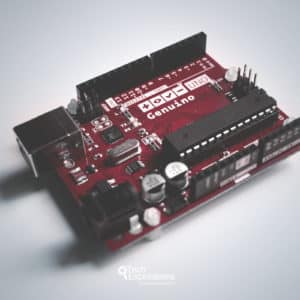The unipolar stepper motor operates with one winding with a center tap per phase. Each section of the winding is switched on for each direction of the magnetic field. Each winding is made relatively simple with the commutation circuit, this is done since the arrangement has a magnetic pole which can be reversed without switching the direction of the current. In most cases, given a phase, the common center tap for each winding is the following; three leads per phase and six leads for a regular two-phase stepper motor.
You will usually see that both these phases are often joined internally, this makes the stepper motor only have five leads. Often a stepper motor controller will be used to activate the drive transistors in the proper order. Since it is quite easy to operate these stepper motors, they are often very popular among hobbyists and are usually the cheapest way to get precise angular movements.
With bipolar stepper motors, there is only a single winding per phase. The driving circuit needs to be more complicated to reverse the magnetic pole, this is done to reverse the current in the winding. This is done with an H-bridge arrangement, however, there are several driver chips that can be purchased to make this a more simple task. Unlike the unipolar stepper motor, the bipolar stepper motor has two leads per phase, neither of which are common. Static friction effects do happen with an H-bridge with certain drive topologies, however, this can be reduced by dithering the stepper motor signal at a higher frequency.
Bipolar motors are generally better than unipolar motors. They have more torque and are more efficient.
However, they are more complicated to drive because they need reverse current.
In terms of construction, bipolar motors have multiple (at least two) independent windings. A wire comes out of each of the winding’s ends, so you get two wires per winding.
Unipolar motors also have multiple windings, however, in addition to the ends of each winding being connected to wires, the middle is also connected to a third wire.
The absence of this third wire means that bipolar motors are slightly simpler to make.
When it comes to driving these motors, however, the simpler bipolar motor requires a more complex driver. This is because, to precisely control its motion, we need to be able to drive current in each winding in both directions.
On the other hand, in a unipolar motor, we can get away with current that flows only in a single direction. This means that the driver electronics can be made simpler. The tradeoff is that we use only half of each winding coil at a given time, and this translates to lower torque and efficiency.
However today, with easy access to motor drivers like H-bridges, it is easy to drive bipolar motors with alternating current. Unipolar motors advantage of not needing the reverse current is not a big deal anymore.

Done with the basics? Looking for more advanced topics?
Arduino Step by Step Getting Serious is our comprehensive Arduino course for people ready to go to the next level.
Learn about Wi-Fi, BLE and radio, motors (servo, DC and stepper motors with various controllers), LCD, OLED and TFT screens with buttons and touch interfaces, control large loads like relays and lights, and much much MUCH more.
